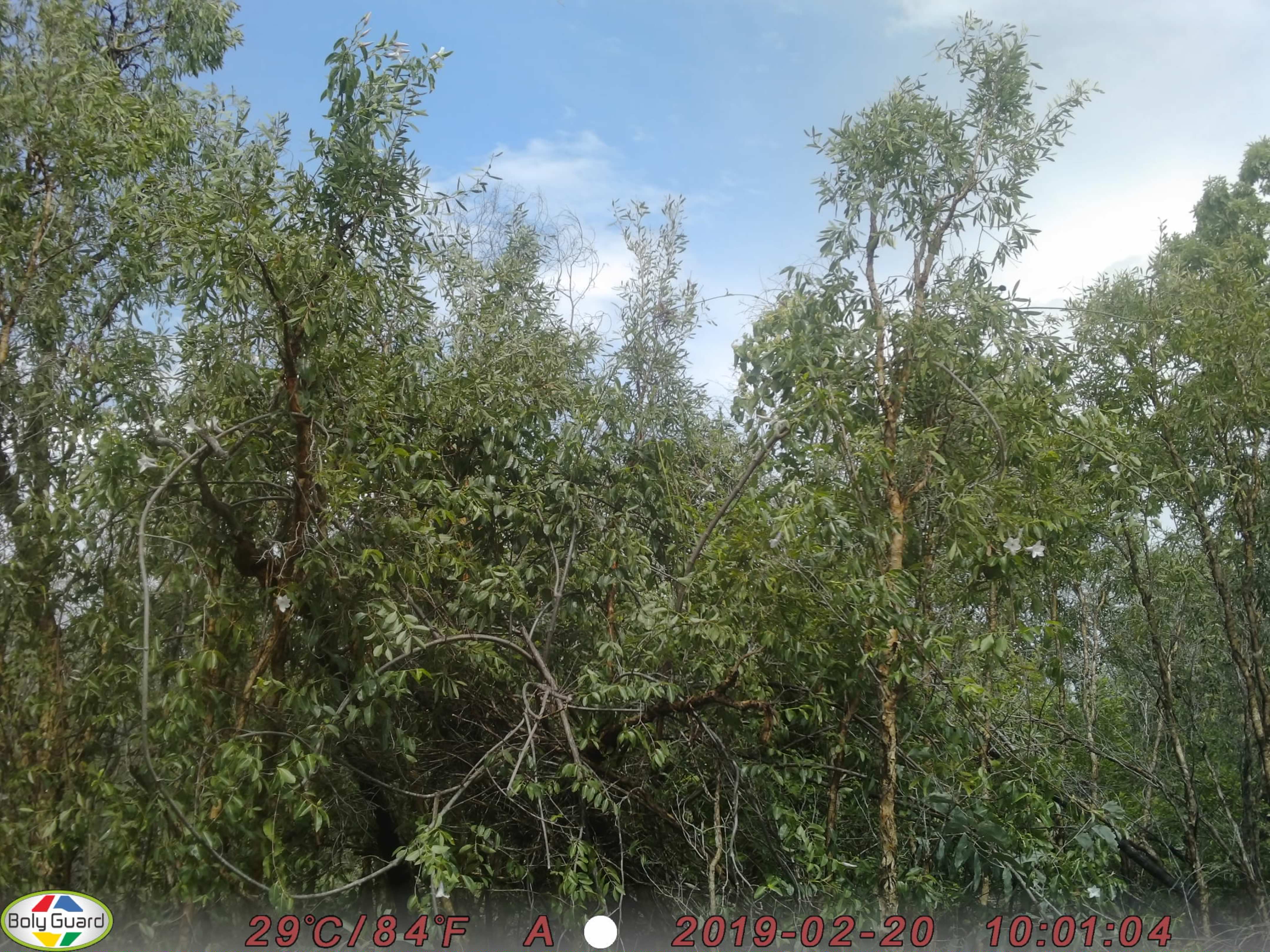The most effective and economical way to search for rubber vine, in 270 square kilometres of infestation area, is from the air. Whether searching with human observers from choppers, or Aquila with aerial images, detection depends on flying when vines are consistently and profusely flowering. Rubber vine grows quickly and flowers during the Kimberley wet season so we fly as late as possible to allow younger vines to grow and start flowering and become visible.
Rubber vine flowering is not consistent or totally predictable. Flowering varies with each wet season, so we monitor real-time flowering maintaining a number of Test Vines, otherwise known as Canaries. The flowering behaviour of these test vines provide a representation of the flowering of other vines potentially remaining in the West Kimberley infestation area.
Special cameras are placed in the field to monitor the daily flowering behaviour of each canary. These cameras capture, and then send daily images over the Telstra mobile network and are accessed over the Internet.
To show trends in flowering behaviour, the number of flowers and condition of each vine is recorded. These trends help us decide when to fly.
Adopt a Canary
If you would like to volunteer to view images and record flowers and condition of one of our canaries, please contact Mr Rubber Vine.
This is an image of Yeeda Mature, one of our canaries on the Yeeda Creek track. It shows several flowers. How many can you see? Check below for the official count.

(Twelve flowers)